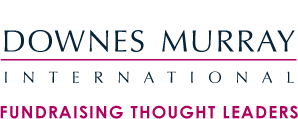
Tip 1: Use an email newsletter provider or list-server
Even if you are just starting out, it is best to use an email newsletter provider like Constant Contact or Mail Chimp. These systems are very inexpensive, particularly for small lists. You can also use an e-mail newsletter service provided by your donor database package, provided you can export the data if you decide to stop using that database. Using an email newsletter provider will make list management far easier. Newsletter service providers also make it easy to stay compliant with SPAM regulations and easy to make your newsletters look nice in both HTML and text formats.
Tip 2: Use a standard template or have one custom designed
You want to make sure that your email newsletters look good, while keeping things simple. You also want to make sure that people recognise your e-newsletter easily by providing a consistent look and feel. The best way to do this is to use a template provided by your email newsletter service provider or to have a template custom designed for your non-profit.
When your list is small, chose one of the templates these newsletter list hosts provide, customise it for your non-profit and use it for every e-newsletter you send out. Once you have more subscribers, time and money, have your web designer create a custom template using your non-profit’s graphics, colours, etc.
Your email newsletters should be much shorter than your paper newsletters. People don’t like to read a lot in their email, they like to browse, then click on links if things interest them.
You can include the first 200 words of four different articles, then include links to the rest of those articles on your site, as a way to including lots of information without having the newsletter look intimidating.
Tip four: Include lots of links to your site
This rule flows from the previous rule about keeping your newsletters short. Be sure to include several links in each newsletter back to your
organisation’s website so that people can get more information and interact with you, without clogging up your newsletter with lots of text.
Also include standard links in each newsletter at the bottom or in a sidebar that allow people to go to your homepage, your about page, your donate page, etc.
Tip 5: Send your e-newsletter at least once every month – preferably every month
If you send your e-newsletter any less than once every other month, people will forget they signed up and will think you are spamming them. Sending it out less than every other month also makes it harder for your non-profit to stay top-of- mind for your donors and prospects.
On the other side of the spectrum, don’t send more than one e-mail newsletter per week – and only do it this often if you have actual news to share and great content to get out on a weekly basis. Be careful – if people read your newsletter and it contains lots of stuff they aren’t interested in, they will stop reading your newsletters and unsubscribe from your list.
Tip 6: Make collection of email addresses for your newsletter a priority
You’re going to be spending a decent amount of time creating an e-newsletter to go out every month or every other month, so you want as many people to read it as possible.
Thus, you should be trying to collect as many e-mail addresses from people as you can to add them to the newsletter – make it clear that you are adding them to the newsletter and make sure they really are opting in and that you aren’t spamming them.
For this reason, one of the primary purposes of your organisation’s website should be to collect email addresses for your email newsletter.
You can also sign up donors through a note on your donation forms asking for an email address and noting that people will be signed up for your free e-newsletter when they respond.
In addition, have clip boards at your events, walk-a-thons, non-ask events and other functions asking people to sign-up for your e-newsletter. Finally, encourage your newsletter readers to share your newsletter with their friends, family and co-workers.
Tip 7: It shouldn’t take all day
Creating your e-newsletter shouldn’t take that long – once you have your template set up, it should be fairly simple. Your e-newsletter should take less than one day to write, edit, upload and send. In many cases, you will be able to do it in far less time than this. Paper newsletters, on the other hand, often take more time.
With acknowledgment to www.thefundraisingauthority.com

Like most modern websites, www.dmi.co.za places small files called 'cookies' on your computer to make your browsing experience as pleasant as possible. By entering this site you accept our Privacy Policy and Cookies Notice
If you’d prefer us not to use cookies, then please turn them off.
Close window and proceed to www.dmi.co.za